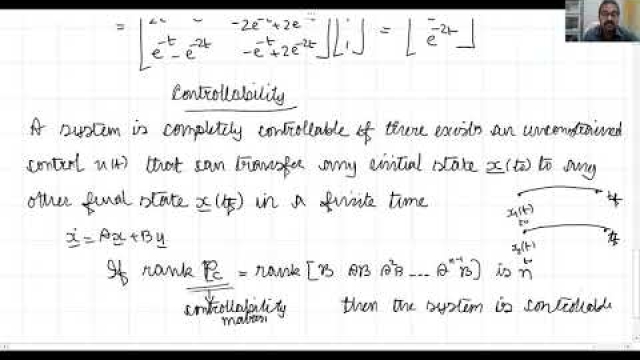Time domain refers to the analysis of mathematical functions, physical signals or time series of economic or environmental data, with respect to time. In the time domain, the signal or function's value is known for all real numbers, for the case of continuous time, or at various separate instants in the case of discrete time. An oscilloscope is a tool commonly used to visualize real-world signals in the time domain. A time-domain graph shows how a signal changes with time, whereas a frequency-domain graph shows how much of the signal lies within each given frequency band over a range of frequencies.
Topic
Time Domain
This topic includes the following resources and journeys:
Type
Experience
Scope
Lecture 11: Transient Response and Numerical Problems
Time domain - tutorial 3: signal transformations
In this video, we learn how different transformations can change the signal shape. Specifically, we cover time shifting & scaling as well as amplitude shift...
See MoreTime domain - tutorial 10: interconnection of LTI systems
In this video, we learn how to connect LTI systems to make a bigger system. The learning objectives are to:1) get familiar with parallel and series intercon...
See MoreTime domain - tutorial 8: LTI systems, impulse response & convolution
In this video, the following materials are covered:1) the beauty of linear & time invariant (LTI) systems2) why the impulse response of an LTI system is so i...
See MoreTime domain - tutorial 7: system properties
In this video, we cover system properties. The concept of memoryless, causal, stable, invertible, time-invariant and linear systems is intuitively explained...
See MoreTime domain - tutorial 9: convolution examples
In this video, we use a systematic approach to solve lots of examples on convolution. By the end of this lecture, you should be able to find convolution betw...
See MoreTime domain - tutorial 6: elementary signals
In this video, we cover two elementary signals, unit step and unit impulse, which will be extensively used in this course. The following materials are covere...
See MoreControl Systems with MATLAB - Time Domain Analysis
Time domain - tutorial 4: transformation examples
In this video, we solve examples to practice different signal transformations using a systematic approach. By the end of this lecture, you should be able to ...
See MoreTime domain - tutorial 1: what is signal processing?
In this video, we review the concept of signal processing and why it is useful to learn it. Learn Signal Processing 101 in 31 lectures covering time, frequen...
See MoreLecture 31: Time response, Controllability and Observability
Time domain - tutorial 5: signal properties
In this video, we learn about some special signals which are symmetric around the y-axis (even) or around the origin (odd) . Then we talk about periodic sign...
See MoreTime domain - tutorial 2: signal representation
In this video, we review how to represent information as a signal. The information can be anything such as voice (1D) or an image (2D) or even a video (3D). ...
See MoreLecture 9: Time response and Time domain specifications
Time domain - tutorial 11: system properties from impulse response
In this video, we learn how to find system properties from the impulse response. Specifically, memoryless, causal, stable and invertible systems will be ful...
See MoreCourse Introduction (Signal Processing 101)
Learn Signal Processing 101 in 31 lectures covering time, frequency and Laplace domain in about 8 hours all together:https://www.youtube.com/watch?v=KZd68xga...
See More















